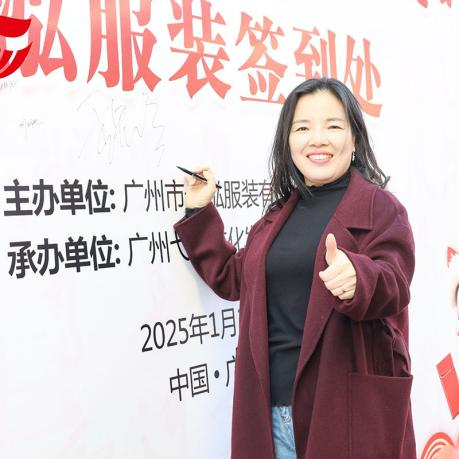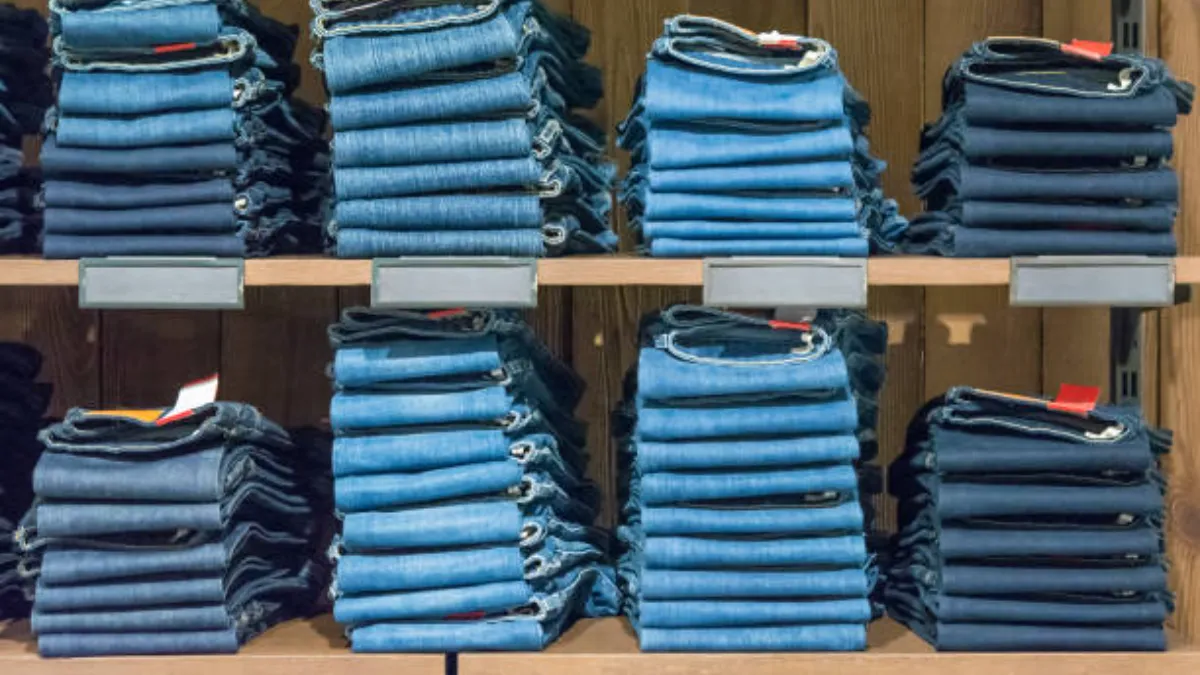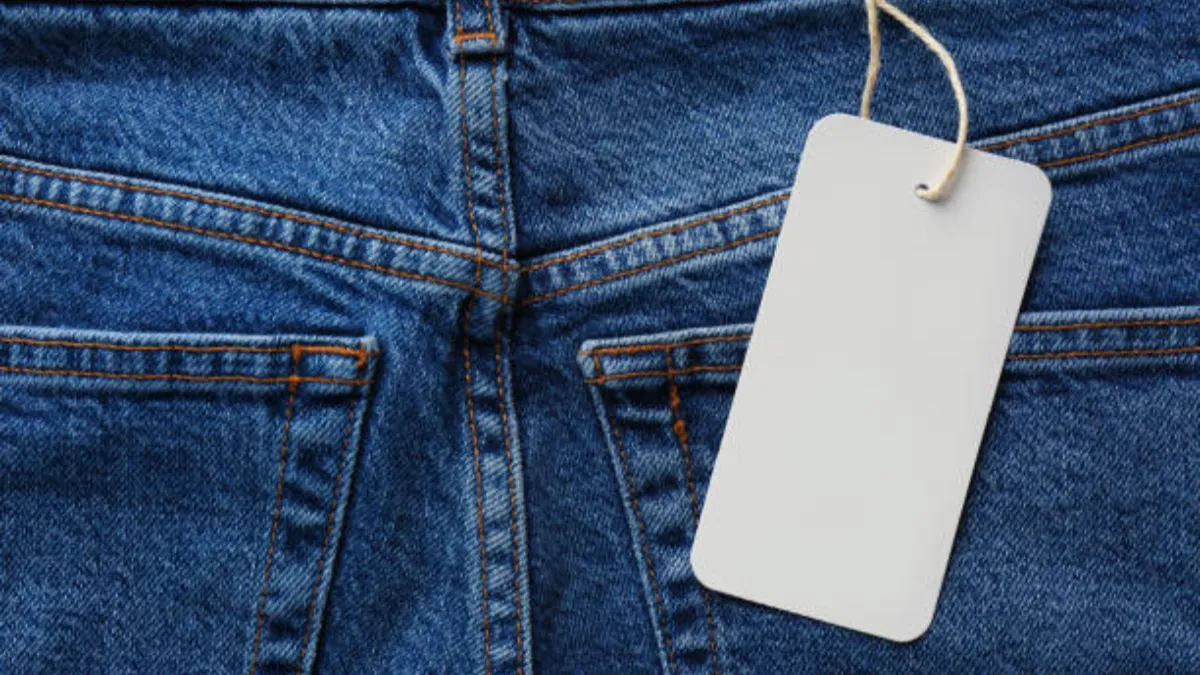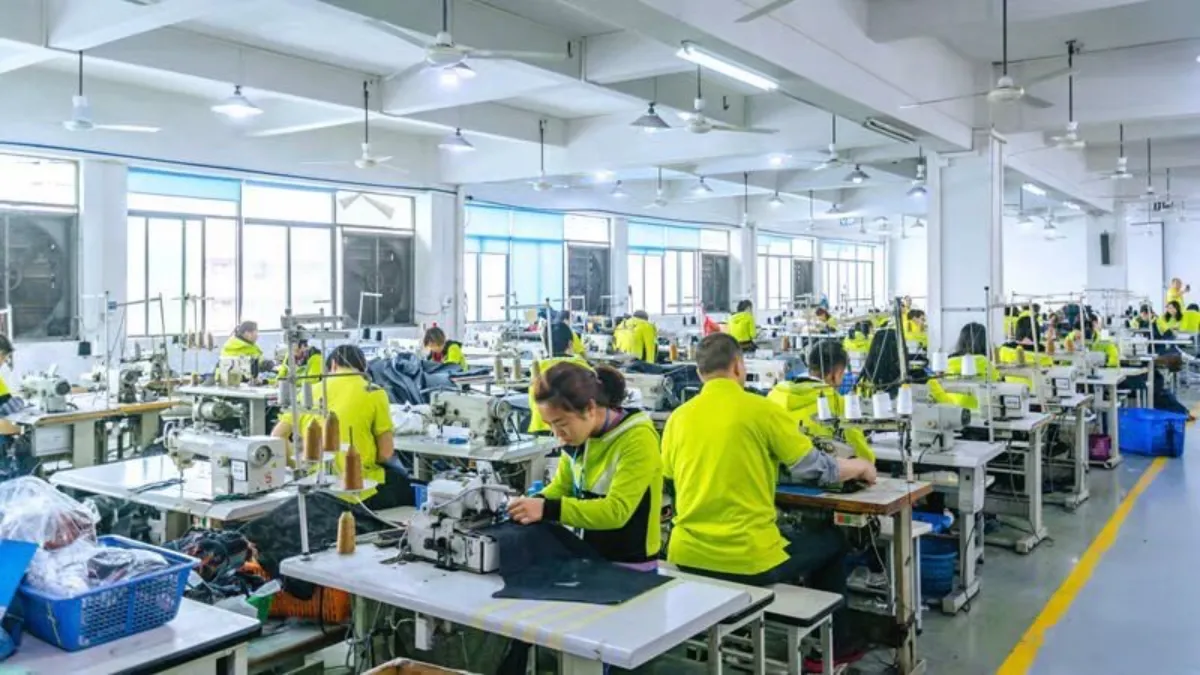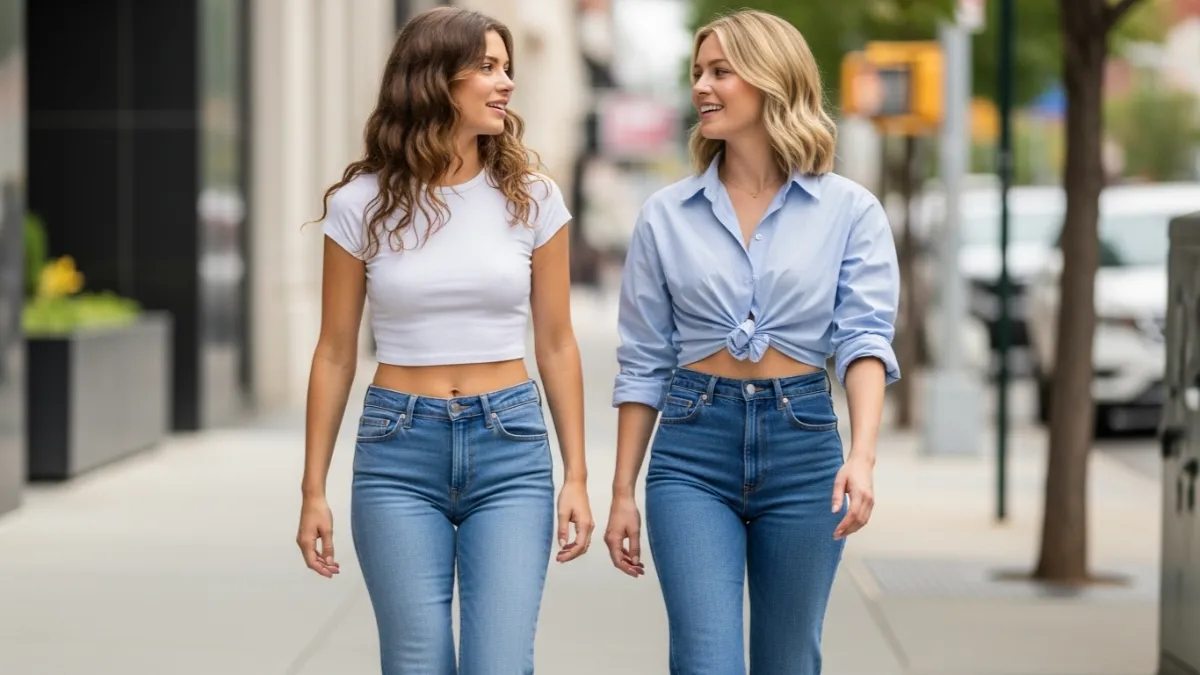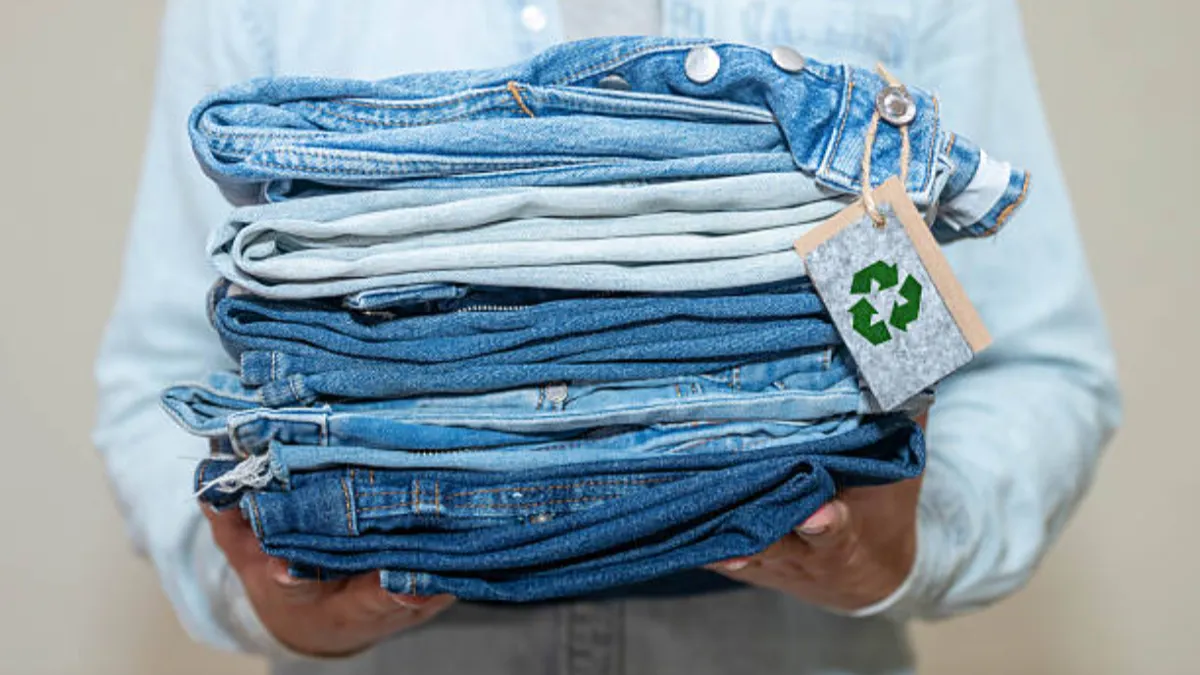Oui, wide-leg trousers are very fashionable in 2026. They stay strong across runway shows, street, and everyday wardrobes. Shoppers choose them because they are comfortable, easy to style, and flattering on many body shapes. This trend is not passing quickly, and brands continue to invest in it for several seasons.
Below is a complete guide combining user-friendly fashion insights and practical production strategies based on what we see daily as a denim clothing manufacturer.
A Brief History of Wide-Leg Trousers in Fashion
Tracking the evolution of wide-leg trousers provides actionable insight for brands and procurement teams aiming to leverage enduring style movements. Each era added new meaning to the shape, from utility to freedom to style. These patterns give brands and manufacturers useful clues about how users respond to volume, confort, and identity in clothing.
Ancient Origins and Early Uses
Loose, wide-cut trousers are not new. Clothing records from ancient Asia and the Middle East show early versions used for riding and daily work. These garments were made for comfort, ease of movement, and heat control. Though the shapes were simple, the idea behind them—freedom and airflow—still matters in today’s designs.
The 1920s Shift: Women’s Liberation and Fashion Innovation
Wide trousers began to enter women’s wardrobes in the 1920s. Influential figures like Coco Chanel pushed relaxed silhouettes that allowed women to move more freely. This change matched the cultural mood of independence. It was the first time wide-leg trousers were seen as modern, élégant, and empowering.
Mainstream Popularity in the 1930s and Beyond
During the 1930s and 1940s, wide-leg trousers gained more visibility in film and mainstream culture. Actresses wore high-waist, long-leg silhouettes that made the body look tall and elegant. After several decades of shape changes—slim, éclater, droit, bootcut—the wide silhouette continued returning in different forms.
The Cyclical Trend of Wide-Leg Trousers in Recent Decades
The 1970s made flared and wide trousers iconic. The style returned in the 1990s, again in the 2010s, and now strongly from 2021 onward. Fashion cycles show that relaxed fits rise whenever customers value comfort and individuality. Dans 2026, this pattern repeats, but with better fabrics, more size options, and cleaner tailoring.
Current Trend Status in 2026 (Data & Insights)
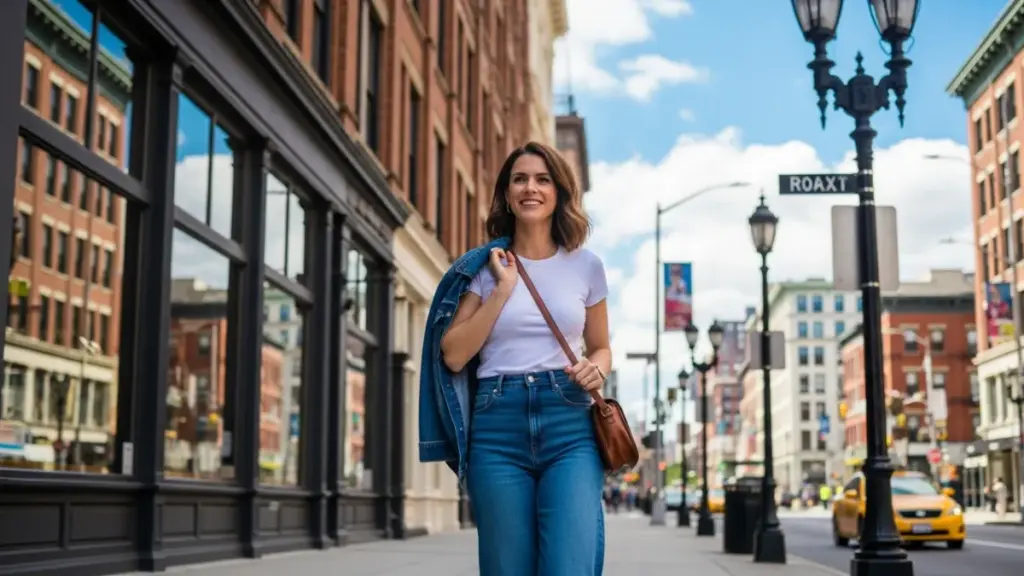
Dans 2026, wide-leg trousers remain one of the most consistent growth categories in both denim and woven bottoms. Many fashion reports show double-digit increases in relaxed-fit searches and high engagement on platforms like TikTok and Pinterest. Retailers confirm that wide cuts often outperform skinny and straight fits in sell-through rates, especially in women’s collections.
The wide-leg pants silhouette is very much alive in 2026, supported by measurable data and clear retail indicators. According to Verified Market Reports, the global women’s trousers market reached about USD 61.92 billion in 2024 and is projected to grow to USD 84.39 billion by 2033, at a CAGR of approximately 3.5% depuis 2026 onward.
In the denim market, doux jean à jambes larges and high-waist cuts continue to dominate spring and fall assortments. From our work at Changhong with global brands, we see more buyers placing repeat orders on the same wide-leg blocks because the fit delivers strong returns. These styles sell well across different price levels—from premium boutique labels to mass-market retailers.
Woven wide-leg trousers also show strong performance. Lightweight fabric versions lead spring/summer assortments, while structured wool and suiting blends perform well in fall. Many apparel brands treat wide-leg trousers as a “core fashion” category, meaning they plan them season after season rather than as a short-term trend.
What Factors Drives the Wide-Leg Trousers Trend?

Wide-leg trousers remain popular in 2026 because several fashion, cultural, and market forces are moving in the same direction. These drivers shape what consumers want to wear and how brands build their collections.
Nostalgic Fashion Cycles and Celebrity Influence
Retro trends are strong drivers. Social media, celebrity styling, and archival fashion bring back 70s and 90s silhouettes. Wide-leg looks photograph well, move well on video, and appeal to younger shoppers who like vintage-inspired dressing.
Post-Pandemic Demand for Comfort and Versatility
People continue to prefer relaxed clothing after spending years in loungewear. Wide-leg trousers give the same sense of ease but look more polished. They fit office dress codes and casual days, so one item works across many situations.
Material Innovation and Premium Positioning
Modern fabrics—Tencel, soft suiting blends, enzyme-finished denim—allow wide-leg trousers to drape smoothly without feeling heavy. This improves the fit and gives a higher-end look. As a professional denim jeans manufacturer, we see rising demand for soft-hand denims and blended fabrics because they help the trousers fall naturally from the waist.
Inclusive Sizing and Broad Demographic Appeal
The silhouette works well on different ages, shapes, and heights. A relaxed top block and long leg line help balance various body proportions. This makes the style safe for retailers to stock and easy for manufacturers to scale into full-size ranges.
Retail Performance and Consumer Demand Signals
Search volume for “wide-leg trousers” and “wide-leg jeans” continues to grow. Many brands keep their best-selling wide-leg fits for several seasons, adjusting only fabrics or colors. This indicates stable core demand rather than a short trend spike. For factories, this means more predictable production planning and longer life cycles per design.
Des solutions denim sur mesure pour votre marque
Leverage over 20 years of expertise with Guangzhou Changhong’s integrated denim manufacturing. From fabrics to final washes, customize every detail with sustainable materials and low minimum orders designed to fit your brand’s unique style and demands.
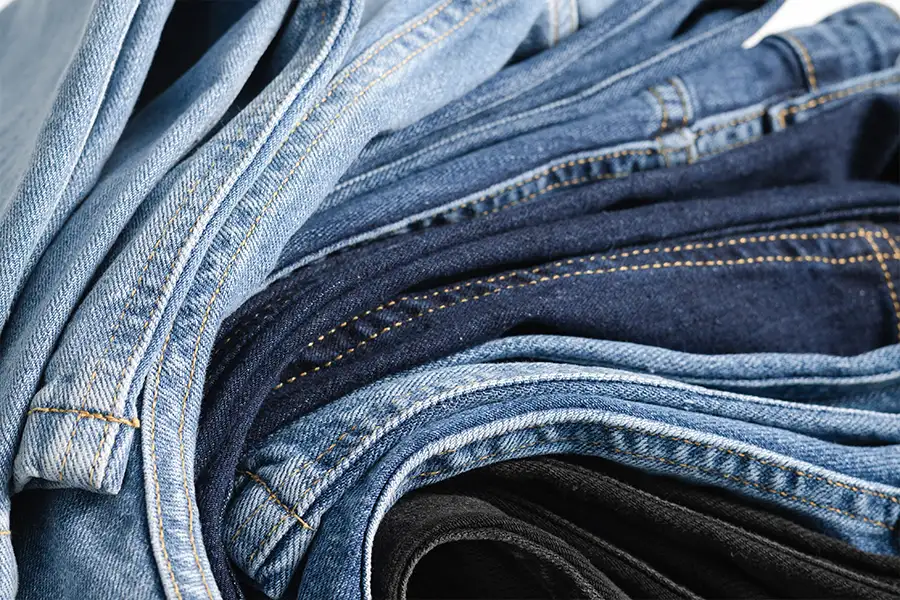
What to Consider When Producing Wide-Leg Trousers?
Wide-leg trousers require disciplined production planning to meet quality and market demands. For brands and buying teams, high-performing fabrics, precise patterning, and firm cost controls are critical to protecting margins and reputation. Managing these elements from the outset reduces delays, quality failures, and avoidable cost overruns.
1. Fabric Selection for Wide-Leg Trousers
Le tissu sets the entire shape. Materials must drape cleanly and move naturally. Pour les jeans en jean, we often recommend 10–12 oz denim with soft finishing. For woven trousers, shoppers prefer Tencel, viscose blends, polyester crepes, and wool blends. These fabrics keep the wide-leg silhouette smooth from hip to hem.
2. Patterning and Fit Development
A precise pattern prevents extra bulk at the hips and makes the legs fall straight. Et Changong, we often adjust grain alignment, waistband curve, and leg width to help clients achieve a balanced shape. Good grading ensures consistent fit across all sizes. Many brands now request petite and tall options to improve sales reach.
3. Cost Management in Wide-Leg Trouser Production
Wide-leg trousers use more fabric than narrow cuts. This impacts price planning. Brands can manage cost by:
- choosing efficient marker layouts
- selecting fabrics that match target budgets
- using repeatable blocks to avoid new development fees each season
What Are the Key Ways to Style Wide-Leg Trousers in 2026?

Wide-leg trousers will be a dominant category in 2026, presenting opportunities for brands to refine silhouettes, matériels, and merchandising to meet evolving consumer priorities. As fabric innovation advances, buyers should plan assortments that combine seasonal flexibility with distinctive brand positioning. The sub-sections below outline actionable styling and merchandising strategies to keep collections aligned with demand shifts.
Silhouette and Fit Evolution
Dans 2026, high-waist and full-length wide-leg trousers lead the market. Clean fronts, smooth waistbands, and long lines create a polished look.
Material and Color Directions
Popular colors include cream, charcoal, washed blue, soft black, and earth tones. For denim, low-stretch and soft rigid fabrics are trending.
Key Styling Combinations and Looks
Shoppers pair wide-leg trousers with:
- fitted tops
- cropped jackets
- tucked shirts
- simple sneakers or heeled boots
Styling Recommendations for Retailers and Brands
Brands often offer core colors year-round and add seasonal shades for newness. Light neutrals work well in spring, while deep colors carry fall assortments.
Merchandising and Visual Storytelling Strategies
Wide-leg trousers look impressive on mannequins and in window displays because of their flow and length. Many retailers use full-body looks with tucked tops to show the leg line.
Sustainability and Innovation in Wide-Leg Trousers
More brands request recycled polyester blends, organic cotton, and traceable denim. Changhong supports these needs by sourcing certified materials and adjusting finishing methods to reduce water and chemical usage.
Partner With Us for High-Quality Wide-Leg Jeans Manufacturing
Looking to launch or scale your wide-leg denim line for 2026 and beyond? Our factory specializes in premium denim production with flexible MOQs, trend-aligned design support, and advanced wash technologies that guarantee consistent quality. From custom silhouettes and sustainable fabrics to precise bulk manufacturing, we help brands and wholesalers bring bestselling wide-leg trousers to market faster.
Ready to develop your next collection? Contactez-nous aujourd'hui for quotations, fabric swatches, or OEM/ODM solutions.
Frequently Asked Questions About Wide-Leg Trousers
Are wide-leg jeans still trending?
Wide-leg trousers remain a strong performer in 2026, serving both casual and formal segments. Their comfort, versatilité, and cross-generational appeal sustain consistent demand. When forecasting, factor in ongoing consumer preference for relaxed fits paired with polished styling.
What fabrics work best for wide-leg trousers?
Lightweight cotton blends and linens deliver breathability with optimal drape for everyday wear. Stretch denim supports movement in heavier constructions. For premium styles, silk blends or rayon create fluid lines that enhance the silhouette and elevate perceived value.
How to adjust patterns for wide-leg trousers?
Increase leg width evenly from hip to hem for balanced proportions. Modify the rise to suit target body profiles and use darts or strategic seams to improve mobility while maintaining shape retention over multiple wears.
Which markets demand wide-leg trousers the most?
North America and Europe lead demand in premium casual and officewear. In Asia, younger consumers are driving adoption for its modern styling. Across regions, e-commerce growth accelerates sell-through, making online-focused production cycles an opportunity for faster volume gains.
How long will the wide-leg trousers trend last?
Forecasts project continued momentum for several years, driven by comfort and sustainability trends. Regularly refresh collections with new fabrics, seasonal colorways, and detail updates to keep each release competitive while meeting enduring demand for versatile silhouettes.

